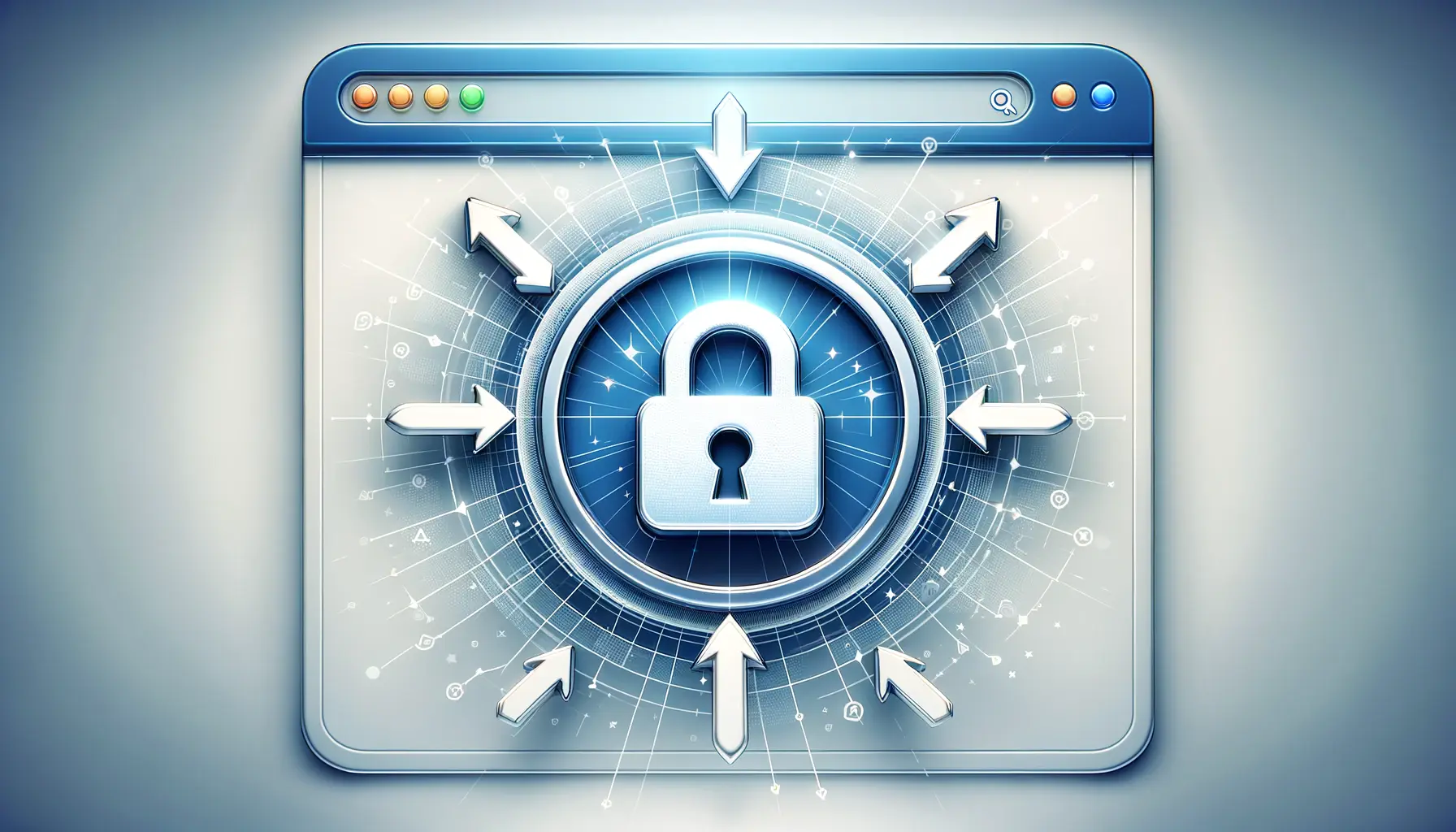Understanding the role of canonical tags within the realm of Technical SEO is crucial for anyone looking to optimize their website for search engines effectively.
These simple yet powerful lines of HTML code are fundamental in directing search engine crawlers towards the “master” version of duplicated or similar content across your site.
By doing so, canonical tags help in consolidating site authority, improving search rankings, and providing a seamless user experience.
The concept of canonicalization addresses the challenge of search engines encountering multiple versions of a single page.
Without a clear directive, search engines might index and rank these duplicates independently, diluting the page’s potential ranking power and leading to a fragmented user experience.
Implementing canonical tags is a strategic approach to signal to search engines which version of the content is the primary one, thus ensuring that all SEO efforts are concentrated where they matter most.
- Introduction to Canonical Tags
- Implementing Canonical Tags Correctly
- The Impact of Canonical Tags on SEO
- Canonical Tags and Content Syndication
- Advanced Canonical Tag Techniques
- Canonical Tags vs. 301 Redirects
- Monitoring and Maintaining Canonical Tags
- Maximizing SEO Success with Canonical Tags
- Canonical Tags in SEO: Your Questions Answered
Introduction to Canonical Tags
What Are Canonical Tags?
At its core, a canonical tag is a snippet of HTML code that helps webmasters prevent duplicate content issues by specifying the preferred version of a web page.
It’s akin to telling search engines, “Out of all these pages that seem very similar, this one is the most authoritative.
Please prioritize it in your index.” This is particularly important in scenarios where content is accessible through multiple URLs, which can easily happen due to the complexities of modern website structures.
Canonical tags are placed in the section of an HTML document, making a clear declaration to search engines about the original source of content.
This practice not only aids in preserving the integrity of your site’s SEO but also ensures that users are directed to the most relevant and authoritative page.
By implementing canonical tags correctly, website owners can avoid the pitfalls of content duplication, which can negatively impact search engine visibility.
Why Canonicalization Matters
The significance of canonicalization in SEO cannot be overstated.
In the digital age, where content is king, ensuring that the right content gets the attention it deserves is paramount.
Duplicate content can lead to a host of issues, including diluted page authority, split link equity, and confused users.
By using canonical tags, webmasters can guide search engines towards their preferred URL, thereby enhancing the site’s SEO performance.
Moreover, canonical tags play a critical role in managing syndicated content.
For websites that publish content across various platforms, canonical tags ensure that search engines recognize the original source.
This is crucial for maintaining the site’s credibility and authority, as well as for protecting the site’s content from being overshadowed by duplicate or syndicated versions.
Canonical tags are essential for directing search engine attention to the primary version of your content, helping to consolidate SEO efforts and improve site visibility.
Implementing Canonical Tags Correctly
Proper implementation of canonical tags is crucial for their effectiveness in SEO strategy.
Incorrect usage can lead to confusion for both search engines and users, potentially harming a site’s search engine rankings.
Here, we delve into the best practices for implementing canonical tags, ensuring that they serve their intended purpose without unintended consequences.
First and foremost, identifying duplicate content within your site is a critical step.
This involves a thorough audit of your website’s content, looking for pages that are either identical or very similar in nature.
Once identified, deciding on the primary version of these pages is essential before implementing the canonical tag.
Best Practices for Canonical Tag Implementation
- Use Absolute URLs: Always specify the absolute URL in the canonical tag to avoid any confusion. This means including the full URL path, making it clear to search engines which page is the canonical version.
- Self-Referencing Canonical Tags: It’s a good practice to include a canonical tag pointing to the page’s own URL. This self-referencing approach helps reinforce the page’s authority and prevents potential issues with duplicate content.
- Consistency Across Site Versions: Ensure that the canonical tags are consistent across different versions of your site, such as mobile and desktop versions. This consistency is crucial for maintaining a unified SEO strategy across all platforms.
- Avoid Canonical Tag Chains: Implementing canonical tags that point to another URL, which then points to another URL (and so on), can create confusion for search engines. Aim for a direct approach by pointing the canonical tag directly to the final preferred URL.
Common Mistakes to Avoid
While canonical tags are powerful tools for SEO, certain pitfalls can negate their benefits.
Awareness of these common mistakes can help ensure that your canonical tags are working for you, not against you.
- Incorrect URL in the Canonical Tag: One of the most common errors is specifying an incorrect URL in the canonical tag. This mistake can lead search engines to index the wrong version of a page, undermining your SEO efforts.
- Using Canonical Tags Instead of Redirects: Canonical tags are not a substitute for proper 301 redirects. If a page has been moved permanently, a 301 redirect is the appropriate tool to use, not a canonical tag.
- Overuse of Canonical Tags: While it might be tempting to use canonical tags broadly across your site, overuse can dilute their effectiveness. Reserve canonical tags for situations where duplicate content cannot be avoided or when specifying the preferred version of similar content.
Correctly implementing canonical tags is a nuanced process that requires attention to detail and an understanding of your website’s content structure.
By following these best practices and avoiding common mistakes, you can leverage canonical tags to enhance your site’s SEO performance and ensure that your content is accurately represented in search engine indexes.
Always double-check the URLs specified in your canonical tags to avoid directing search engine authority to the wrong page.
The Impact of Canonical Tags on SEO
Canonical tags have a profound impact on search engine optimization (SEO) by addressing duplicate content issues and consolidating page authority.
Their correct implementation can significantly enhance a website’s visibility and ranking on search engine results pages (SERPs).
This section explores the various ways canonical tags influence SEO and why they are indispensable in a comprehensive technical SEO strategy.
One of the primary benefits of canonical tags is their ability to consolidate link equity among duplicate or similar pages.
By directing search engines to the canonical version of the content, all link signals and ranking power are concentrated on this preferred page, enhancing its ability to rank higher in SERPs.
Consolidating Link Equity
Link equity, also known as link juice, is a critical factor in SEO.
It refers to the value and authority that a link passes from one page to another.
In the presence of duplicate content, link equity can become diluted as external sites link to various versions of the same content.
Canonical tags solve this problem by signaling to search engines which page should receive all the accumulated link equity, thereby strengthening its ranking potential.
Improving Crawl Efficiency
Search engines allocate a crawl budget for each website, which is the number of pages a search engine bot will crawl on a site within a certain timeframe.
Duplicate content consumes a portion of this budget unnecessarily, as search engines spend time crawling and indexing multiple versions of the same content.
By implementing canonical tags, webmasters can guide search engine bots to the content that matters most, optimizing the use of their crawl budget and increasing the likelihood that more of their site’s pages are indexed.
Enhancing User Experience
While the primary function of canonical tags is to guide search engines, they also indirectly benefit the user experience.
By ensuring that users are directed to the most authoritative and relevant version of a page, canonical tags help prevent confusion and frustration that can arise from encountering duplicate content.
This streamlined user experience can lead to increased engagement, lower bounce rates, and higher conversion rates, all of which are positive signals to search engines.
Avoiding Content Penalties
Although search engines, like Google, have stated that there is no direct penalty for duplicate content, the presence of such content can still negatively impact a site’s SEO performance.
Duplicate content can lead to competition between a site’s own pages for ranking, which may result in lower visibility for each page.
Canonical tags help mitigate this risk by clearly indicating which page should be considered for ranking, thus avoiding the potential for self-competition and ensuring that the site’s SEO efforts are focused and effective.
In conclusion, the strategic use of canonical tags is a key component of technical SEO that can significantly influence a website’s search engine ranking and overall online presence.
By effectively managing duplicate content and consolidating page authority, canonical tags not only improve SEO performance but also enhance the user experience, making them an essential tool for webmasters and SEO professionals alike.
Consider reviewing your site’s content periodically to ensure that canonical tags are used effectively and updated as your site evolves.
Canonical Tags and Content Syndication
Content syndication is a strategy used by websites to republish their content on other platforms to reach a wider audience.
While this can significantly increase a site’s visibility and traffic, it also introduces the risk of creating duplicate content across the web.
Canonical tags play a crucial role in managing this risk, ensuring that search engines recognize the original source of the content and attribute the proper authority to it.
Effectively using canonical tags for content syndication involves a few key considerations to maintain SEO integrity and leverage the benefits of syndication without compromising the original site’s search engine rankings.
Strategies for Using Canonical Tags in Syndication
- Identify the Original Content: Clearly mark the original piece of content on your site with a canonical tag. This tag should point to the URL of the page where the content first appeared, signaling to search engines that this is the version that should be indexed and ranked.
- Communicate with Syndication Partners: When syndicating content, ensure that your partners agree to use a canonical tag pointing back to the original content on your site. This agreement is crucial for preserving the SEO value of your content and preventing the syndicated versions from competing with the original in search engine rankings.
- Monitor Syndicated Content: Keep track of where and how your content is being syndicated. Regular monitoring allows you to ensure that canonical tags are properly implemented across all syndicated versions and to address any issues that may arise with syndication partners.
Benefits of Canonical Tags in Content Syndication
- SEO Value Retention: By using canonical tags, the original publisher retains the SEO value of the content, including link equity and ranking potential, even when the content is widely syndicated across other platforms.
- Increased Visibility without Penalty: Canonical tags enable publishers to increase their content’s visibility through syndication without the risk of duplicate content penalties, ensuring that the original site maintains its authoritative status in search engine results.
- Control Over Content Indexing: With canonical tags, publishers have greater control over which version of their content is indexed by search engines, allowing them to direct users and search engine bots to the most authoritative source.
Content syndication, when managed correctly with the use of canonical tags, can be a powerful tool for extending the reach of your content while safeguarding your site’s SEO performance.
It exemplifies the delicate balance between maximizing exposure and maintaining control over your site’s search engine optimization efforts.
Canonical tags ensure that the SEO benefits of your original content are preserved, even when that content is republished across multiple platforms.
Advanced Canonical Tag Techniques
While the basic implementation of canonical tags is straightforward, there are advanced techniques that can further enhance their effectiveness in complex SEO scenarios.
These techniques are particularly useful for large websites with dynamic content, e-commerce platforms, and sites that have undergone mergers or acquisitions.
Mastering these advanced strategies can significantly improve a site’s SEO performance by addressing nuanced duplicate content issues and optimizing site architecture.
Understanding and applying these advanced canonical tag techniques requires a deep dive into the intricacies of website management and SEO optimization.
Here, we explore some of the more sophisticated approaches to using canonical tags effectively.
Handling Parameterized URLs
- Identify Parameter Variations: Websites often use URL parameters for tracking, sorting, and filtering content. These parameters can create multiple URLs that point to the same content, leading to duplicate content issues. Identifying all variations of parameterized URLs is the first step in addressing this challenge.
- Canonical Tags for Preferred URLs: Once you’ve identified the primary version of the content, use canonical tags to point all parameterized variations back to this preferred URL. This approach consolidates SEO signals and ensures that search engines focus on the canonical version.
Managing Content Across Domains
- Consolidate Domains with Canonical Tags: For businesses that operate multiple domains, canonical tags can help consolidate SEO signals across these sites. By selecting a primary domain and using canonical tags to point to it from other domains, businesses can strengthen their overall SEO footprint.
- Cross-Domain Canonicalization: This technique is particularly useful for content that exists on separate domains but needs to be recognized as originating from a single source. It requires careful coordination to ensure that all domains involved use canonical tags correctly.
Optimizing for Mobile and AMP
- Mobile Pages: With the increasing importance of mobile search, ensuring that canonical tags are correctly implemented on mobile versions of your site is crucial. This often involves using alternate tags in conjunction with canonical tags to specify the relationship between mobile and desktop content versions.
- AMP (Accelerated Mobile Pages): For sites utilizing AMP, canonical tags play a key role in linking AMP versions to the standard website version. This ensures that SEO benefits are appropriately attributed to the original content, regardless of the platform on which it’s viewed.
These advanced techniques underscore the versatility and importance of canonical tags in a comprehensive SEO strategy.
By addressing specific challenges related to duplicate content, URL parameters, and cross-domain content management, webmasters can significantly enhance their site’s SEO performance and ensure a cohesive and authoritative online presence.
Leveraging advanced canonical tag techniques can address complex SEO challenges, optimizing your site’s performance across various scenarios.
Canonical Tags vs. 301 Redirects
Canonical tags and 301 redirects are both essential tools in the SEO toolkit, each serving a specific purpose in managing website content and structure.
While they may seem similar at first glance, understanding their distinct roles and when to use each can significantly impact a site’s SEO performance.
This section delves into the differences between canonical tags and 301 redirects, highlighting their unique benefits and appropriate applications.
At its core, the choice between using a canonical tag or a 301 redirect depends on the specific scenario and the desired outcome regarding content accessibility and search engine indexing.
Understanding 301 Redirects
- Purpose: A 301 redirect is used to permanently redirect one URL to another. It tells search engines and users that the page has moved permanently and ensures that the link equity and traffic are transferred to the new URL.
- Use Cases: 301 redirects are ideal for situations where content has been permanently moved or deleted, such as site restructuring, domain changes, or consolidating similar content into a single resource.
- SEO Impact: Properly implemented 301 redirects can preserve and transfer SEO value from the old URL to the new URL, maintaining a site’s ranking power and visibility in search engine results.
When to Use Canonical Tags
- Purpose: Canonical tags are used to specify the preferred version of similar or duplicate content across multiple URLs. Unlike a redirect, the canonical tag does not reroute users but informs search engines which version of the content to index and rank.
- Use Cases: Canonical tags are best used when multiple versions of a page should remain accessible to users but you want to direct search engines to index a preferred version. This is common in e-commerce sites with product pages accessible through multiple URLs due to tracking parameters, sorting, or filtering options.
- SEO Impact: Canonical tags help consolidate link equity to a single preferred URL, enhancing its ranking potential without removing access to other versions of the content.
Choosing between a canonical tag and a 301 redirect is a strategic decision based on the specific needs of your website and your SEO goals.
While 301 redirects are about physically moving content and ensuring users and search engines follow to the new location, canonical tags are about clarifying content hierarchy and preference without altering user access.
Both tools are vital for maintaining a clean, user-friendly, and SEO-optimized website structure.
Using a 301 redirect when a canonical tag is more appropriate can unnecessarily hide content from users, while misusing canonical tags can lead to indexing issues.
Monitoring and Maintaining Canonical Tags
Implementing canonical tags is not a set-it-and-forget-it task.
Continuous monitoring and maintenance are crucial to ensure they remain effective and contribute positively to your site’s SEO strategy.
As websites evolve, new content is added, and old content is updated or removed, the landscape of duplicate content and the relevance of canonical tags can shift.
This final section focuses on best practices for monitoring and maintaining canonical tags to ensure ongoing SEO success.
Regular audits and updates to your canonical tags can prevent common issues that may arise over time, such as broken links, outdated tags, or improper implementation, all of which can negatively impact your site’s search engine rankings.
Best Practices for Canonical Tag Maintenance
- Conduct Regular Audits: Periodically review your site’s use of canonical tags to ensure they are correctly implemented and still relevant. Tools like Google Search Console can help identify issues with canonical tags, such as tags pointing to non-existent pages or incorrect URLs.
- Update Tags as Your Site Evolves: As you add, remove, or update content, ensure your canonical tags reflect these changes. This may involve adding new tags, removing outdated ones, or updating existing tags to point to the most current version of a page.
- Monitor Indexing and Ranking: Keep an eye on how your pages are indexed and ranked in search engines. If you notice unexpected changes in search visibility for pages with canonical tags, it may be time to review and adjust those tags.
- Address Technical Issues Promptly: Technical issues, such as server errors or incorrect tag implementation, can render canonical tags ineffective. Addressing these issues promptly ensures that your canonical tags continue to perform as intended.
Utilizing Tools and Resources
Leveraging SEO tools and resources can significantly streamline the process of monitoring and maintaining canonical tags.
Many SEO platforms offer features specifically designed to track and analyze the effectiveness of canonical tags, providing insights into potential issues and opportunities for optimization.
Utilizing these tools can save time and ensure that your canonical tags are always contributing positively to your site’s SEO performance.
Maintaining an effective canonical tag strategy requires ongoing attention and adaptation to the changing dynamics of your website and its content.
By regularly auditing and updating your canonical tags, you can ensure that they continue to serve their purpose in guiding search engines and consolidating SEO efforts towards the most relevant and authoritative content on your site.
Regularly updating and auditing your canonical tags is essential for maintaining their effectiveness in your site’s SEO strategy.
Maximizing SEO Success with Canonical Tags
In the intricate world of Technical SEO, canonical tags emerge as a pivotal element, steering the course of a website’s search engine optimization journey towards clarity, authority, and improved rankings.
This article has traversed the multifaceted landscape of canonical tags, shedding light on their significance, implementation, and maintenance to harness their full potential for SEO success.
As we conclude, it’s essential to integrate the insights and strategies discussed into a cohesive approach that elevates your website’s SEO performance.
Key Takeaways for Effective Canonical Tag Strategy
Canonical tags, when used correctly, can transform your website’s SEO landscape by addressing duplicate content, consolidating link equity, and guiding search engines to your preferred content versions.
Here are the essential takeaways to ensure your canonical tag strategy is both effective and efficient:
- Implement canonical tags meticulously, ensuring they point to the most authoritative version of your content.
- Regularly audit your website to update or correct canonical tags, keeping them aligned with your site’s evolving content landscape.
- Leverage canonical tags for content syndication, ensuring your original content retains its SEO value across different platforms.
- Understand the distinct roles of canonical tags and 301 redirects, applying each tool appropriately to optimize your site’s SEO.
- Embrace advanced techniques for handling complex scenarios like parameterized URLs, content across domains, and mobile optimization.
Forging Ahead: The Future of Canonical Tags in SEO
As search engines become increasingly sophisticated, the role of canonical tags in SEO strategies continues to evolve.
Staying abreast of changes in search engine algorithms and SEO best practices is crucial for maintaining the effectiveness of your canonical tags.
The future of SEO demands a proactive approach, where continuous learning, adaptation, and strategic implementation of canonical tags will be key to achieving and sustaining top search engine rankings.
In conclusion, canonical tags stand as a testament to the nuanced and technical nature of SEO.
By embracing the strategies outlined in this article, you can ensure that your use of canonical tags contributes positively to your website’s SEO endeavors.
Remember, the goal is not just to avoid duplicate content issues but to craft a coherent, authoritative, and highly visible online presence that search engines and users alike will recognize and reward.
Want your website to top Google search rankings? Leave the SEO to our professional agency!
Canonical Tags in SEO: Your Questions Answered
Delve into the most common inquiries surrounding canonical tags and their pivotal role in SEO strategy with our curated FAQ section.
A canonical tag tells search engines which version of a page is the master to prevent duplicate content issues in search results.
They consolidate search ranking signals to the preferred URL, enhancing the visibility and authority of your main content.
Yes, by directing link equity to a single URL, canonical tags can positively impact the search ranking of your chosen page.
While not a penalty, duplicate content can dilute SEO efforts. Canonical tags help focus these efforts on a single, authoritative page.
Yes, implementing self-referencing canonical tags is considered best practice to reinforce the authority of each page’s content.
Select the URL version that best represents the content and is most likely to provide a positive user experience.
Yes, canonical tags can pass some link authority to the preferred page, helping to consolidate your site’s SEO strength.
Canonical tags suggest the preferred page for indexing without redirecting visitors, while 301 redirects permanently move content to a new URL.










